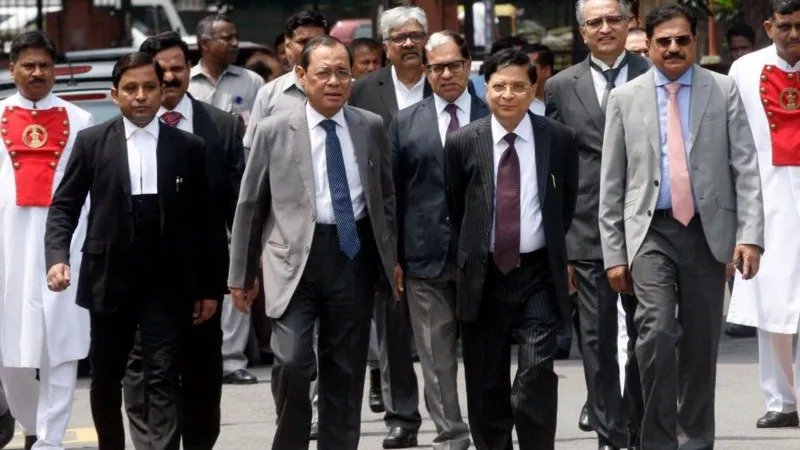
In September 2021, a photograph from the Indian Supreme Court of then chief justice NV Ramana flanked by his four female colleagues went viral.
This was the highest-ever tally of female judges in the 34-member top court and was hailed as a "historic moment".
Many saw it as a turning point for India's top judiciary and expressed the hope that it would start reversing the skewed gender gap in India's top court.
But four years later, that hope lies in tatters and the Supreme Court is back to being – as lawyer Sneha Kalita described it - "a men's club".
Three of the women seen in that photograph with Justice Ramana - Justice Indira Banerjee, Justice Hima Kohli and Justice Bela M Trivedi – have since retired.
And as no woman has been appointed to the top court since then, Justice BV Nagarathna is now the sole female judge there.
"This is alarming. It's nothing short of catastrophic," Ms Kalita, a member of an association of female advocates who have filed a petition in the Supreme Court demanding fair representation of women in courts, told the BBC.
Historically, Indian judiciary has been dominated by men. From 1950, when the Supreme Court came into existence, it took 39 years for Justice Fathima Beevi to be appointed the country's first female judge in 1989.
"I opened a closed door," she told news website Scroll in 2018. But in 75 years, the court has welcomed very few women – only 11 out of the 287 judges or a measly 3.8%.
"With just one woman, we are back to near-zero representation in the top court. This has become a men's club," Ms Kalita says.
What is also troubling is that there are only 103 female judges compared with 670 males in the high courts - and at least four do not have a single woman.
This low representation of women has come into sharp focus in recent weeks after the latest batch of appointments was made to the Supreme Court.
The court had two vacancies to fill and it was expected that the Supreme Court collegium - which includes the chief justice and four senior-most judges and recommends names to the government - would use the opportunity to correct the acute gender imbalance.
But in August-end, two high court judges - both male - were elevated to the role. Media reports say that at least three female high court judges in the country were senior than one of the elevated judges.
The collegium's other recent selections have also ignored women - Bombay High Court last week got 14 new judges, but only one was woman. For Allahabad High Court, the proposed list of 26 candidates includes only five women.
This low representation of women in the top court as well as "in high courts across the country" prompted the Supreme Court Bar Association (SCBA) to put out a strong statement expressing "deep disappointment" and "grave concern".
SCBA president and senior lawyer Vikas Singh told the BBC that "women make for 40% of all judges in lower judiciary, that is district courts and below, where recruitments are on merit and candidates are chosen through written exams and interviews".
"But in higher judiciary where they are selected by the collegium, they make for less than 10%. Something very drastic needs to be done. Effort must be made to look for more women," he said.
Most women lawyers the BBC spoke to welcomed the SCBA intervention. "I'm glad the bar association has raised it, it's not a women's problem. It reflects on us as a society," said senior lawyer Madhavi Divan.